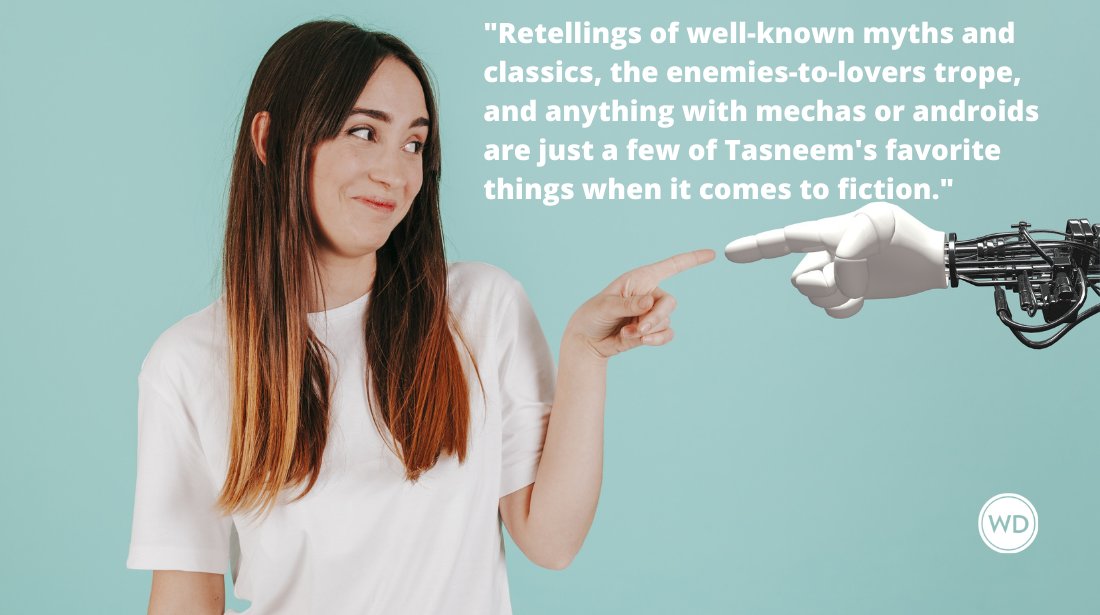7 Things I Learned So Far, by Heather Sellers
Outside of personal experience, the best way to learn is to get advice from people who’ve been there and done that. Discover the seven things learned so far by author Heather Sellers.
This is a recurring column called “7 Things I’ve Learned So Far,”where writers (this installment written by Heather Sellers, author of CHAPTER AFTER CHAPTER) at any stage of their career can talk about writing advice and instruction as well as how they possibly got their book agent -- by sharing seven things they’ve learned along their writing journey that they wish they knew at the beginning.
Check out Heather Sellers's Chapter After Chapter today.
Amazon
[WD uses affiliate links.]
1. Don’t start with an idea. Start with an image. Readers want to enter your world. Too often, we writers start with our grand ideas, our glorious intentions. Start your poem, your essay, your novel, your screenplay, your love letter, with an image. An image isn’t static. It’s a scene, something taking place in real time--is a little micro-movie. It’s action that engages us on the sensory level.
2. Start with conflict right away. Don’t warm up, wander, or muse. Start with a battle: one character’s strong urgent desire set against, and directly opposing another equally “right” character’s strong unmet desire. Plunge into problem.
3. Come in through the side door. If you are too on the nose, you lose your reader. Coming in through the front door means your piece is about exactly what it says it is about. But our pleasure in reading is figuring things out. Set up the writing so your reader gets to be smart; trust that she truly wants to figure things out. Write so that the words point to your point but don’t spell it out directly. Readers are brilliant. And powerful writing creates an envelop for the reader to slip into. When writing about despair and meaninglessness, start with a bug. When writing about transcendent love, start with something as unexpectedly to the side as a sandwich.
Order a copy of The Practice of Creative Writing by Heather Sellers.
4. Notice what you notice. My friends are always commenting on the notebook by my side, the note cards in my pockets, my habit of asking for a piece of paper and writing things down. I guess it’s weird but I can’t even walk down to the mailbox without a note card and a pencil in hand. At restaurants, at red lights, on hikes, kayaking, even riding my bike, I’m always pausing to take notes. It’s very difficult to invent convincing details on the spot. But more importantly, noting strengthens the observing mind, and that’s your gold as a writer, noticing what you notice.
5. Take care not to write solely for revenge or therapy or venting. That’s what your diary/therapist/best friend is for. Part of the point of literature is to help us see why annoying people are annoying. Write to learn; don’t write to unburden or to punish. Your work can be darkly honest and brutally exposing of injustice and it can still be fair, beautiful, and (when appropriate) kind.
6. Use lists in your work. If you give the reader lists of specifics (she loved roasted chicken, antique fairs, handing her husband his folded laundry and her dog’s head in her lap, that weight) you give her everything she needs. Quickly. Lists not only increase the tempo of your work, they can deliver an enormous amount of necessary information in an appealing rhythmic package. Try a list on every page: short lists, long lists, lists with surprises, two item lists, secret lists.
7. Billy Joel calls his working life “being in harness.” Every since I heard him say that in an interview, I’ve adopted it. “I’m in harness,” I tell my friends. I can’t go play. I’m in harness. You can’t live your whole life in harness though. You have to know how long the trip is going to be, or you are unlikely to saddle up. I write in four forty-minute blocks of time, with mandatory fifteen minute breaks in between. This kind of happens from 9-1, but not exactly. If I don’t hit my marks, I have to work at night. I’m in harness, but the milk runs are clear, definable, and they end. I can’t work without a timer. I can focus for 45 minutes. No more, no less. I’m half horse, half rider.
Heather Sellers is the author of two popular guides to the writing life, Page after Page and Chapter after Chapter as well as a textbook for writers, The Practice of Creative Writing. Her award-winning memoir, You Don't Look Like Anyone I Know was an O, Oprah book of the month club selection. She teaches creative nonfiction at the University of South Florida. Find her on Twitter.







